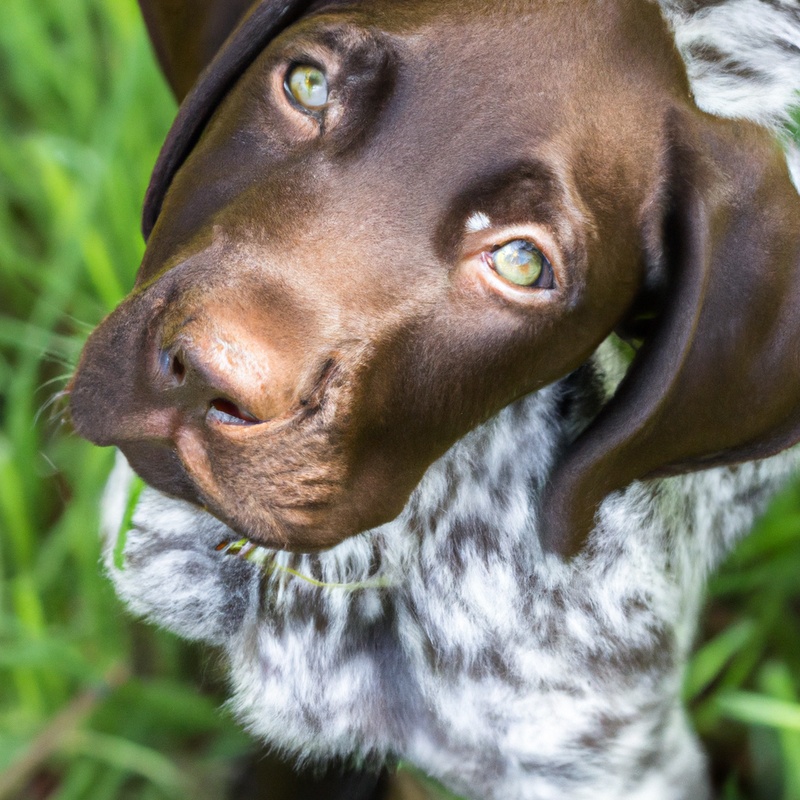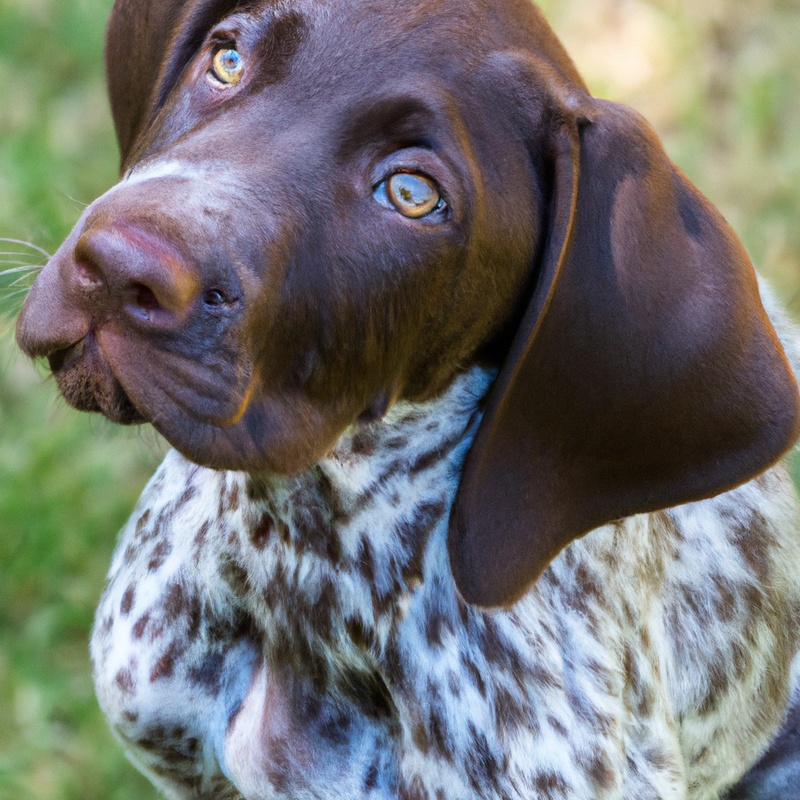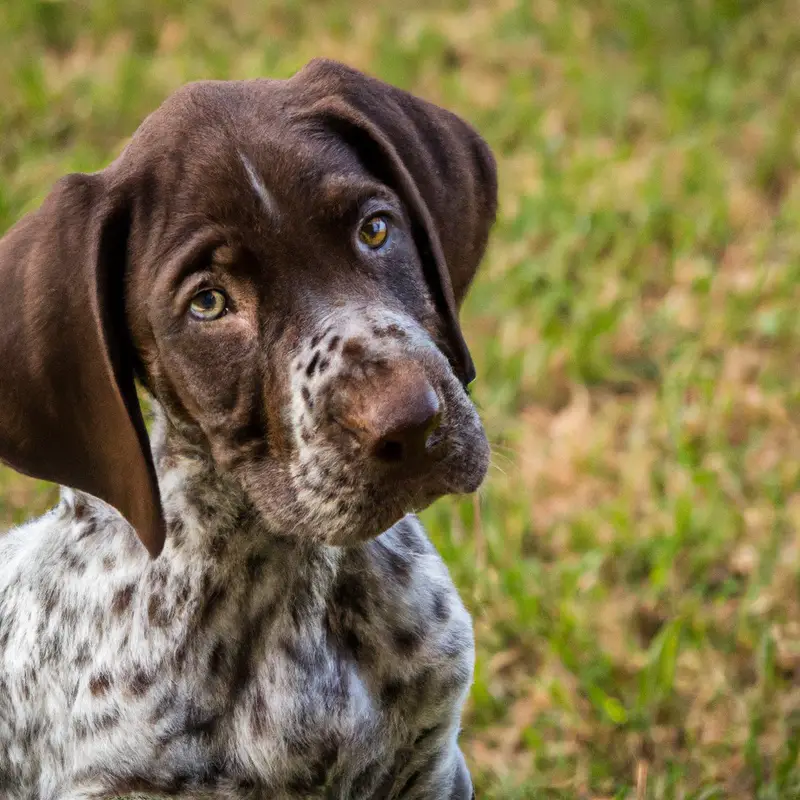What Are The Signs Of a German Shorthaired Pointer Being Anxious Or Fearful?
Key Takeaways:
- Excessive panting and drooling can be signs of anxiety or fear in German Shorthaired Pointers.
- Aggressive behavior, such as growling or snapping, may indicate anxiety or fear in this breed.
- Avoidance or hiding behaviors, such as trying to escape or seeking refuge in a secluded area, can be signs of anxiety or fear in German Shorthaired Pointers.
- Destructive behavior, such as chewing or digging, may be a result of anxiety or fear in this breed.
Imagine this scenario: You’re welcoming a new furry addition into your family, a beautiful German Shorthaired Pointer. Full of energy and zest for life, these dogs are known for their athleticism and intelligence.
But what happens when your furry friend starts showing signs of anxiety or fear?
Understanding their behavior is key to providing them with the support they need to thrive. In this article, I’ll dive into the unique characteristics of the German Shorthaired Pointer breed, the signs of anxiety or fear to watch out for, and strategies to help them feel safe and secure in various situations.
So, grab a cup of coffee, get comfortable, and let’s explore the world of anxious and fearful German Shorthaired Pointers together.
| Signs of Anxiety or Fear in a German Shorthaired Pointer |
|---|
| 1. Body Language |
| – Shaking |
| – Trembling |
| – Tail tucking |
| – Cowering |
| – Ears back |
| – Whale eye (wide-eyed appearance) |
| – Lip licking or yawning |
| – Pacing or restlessness |
| 2. Vocalizations |
| – Excessive barking or howling |
| – Whining or whimpering |
| 3. Avoidance Behaviors |
| – Hiding or seeking cover |
| – Attempt to escape or run away |
| 4. Aggression |
| – Growling |
| – Snapping or biting |
| 5. Changes in Body Functions |
| – Excessive drooling |
| – Increased heart rate |
| – Panting |
| – Loss of appetite |
| – Diarrhea or vomiting |
Understanding the German Shorthaired Pointer’s Behavior
Introduction to the German Shorthaired Pointer breed
The German Shorthaired Pointer is a versatile and energetic breed that is highly sought after by active individuals and families. With their sleek coats and athletic build, these dogs are known for their agility and endurance.
They were originally bred as hunting dogs, capable of tracking and retrieving game both on land and in water.
Aside from their impressive hunting abilities, German Shorthaired Pointers are also known for their intelligence, trainability, and friendly disposition. They thrive on human companionship and make excellent family pets, as they are typically good with children and other animals.
Overview of typical German Shorthaired Pointer behavior
German Shorthaired Pointers are known for their energetic and active nature. They are intelligent, adaptable, and love to be a part of family activities.
This breed has a strong prey drive, which means they may show interest in chasing small animals.
They are also friendly and sociable with both people and other dogs. GSPs thrive on exercise and mental stimulation, so regular physical activity and training sessions are essential to keep them happy and well-behaved.
They are generally eager to please their owners and can make excellent companions for active individuals or families.
Factors that can contribute to anxiety or fear in German Shorthaired Pointers
German Shorthaired Pointers, like any other breed, can experience anxiety or fear in certain situations. There are several factors that can contribute to these feelings in these dogs.
Understanding these factors can help us create a safe and comfortable environment for them.
Here are some common factors that can contribute to anxiety or fear in German Shorthaired Pointers:
- Lack of socialization: Dogs that have not been properly socialized may become anxious or fearful in unfamiliar situations or around new people or animals. Early socialization is key to helping them build confidence and reduce anxiety.
- Traumatic experiences: Dogs that have had negative experiences such as abuse, neglect, or accidents can develop anxiety or fear as a result. These experiences can have a lasting impact on their behavior and may require patience and understanding to overcome.
- Genetic predisposition: Some German Shorthaired Pointers may have a genetic predisposition to anxiety or fearfulness. It is important to be aware of your dog’s lineage and any potential predispositions they may have.
- Change in environment: German Shorthaired Pointers are sensitive to changes in their environment. Moving to a new home, changes in routine, or the addition of new family members or pets can cause them to feel anxious or fearful.
- Lack of exercise or mental stimulation: German Shorthaired Pointers are an active and intelligent breed. Without enough physical exercise and mental stimulation, they can become restless and anxious.
- Separation anxiety: Like many dogs, German Shorthaired Pointers can develop separation anxiety when left alone for long periods. This can manifest as destructive behavior, excessive barking, or attempts to escape.

Signs of Anxiety or Fear in German Shorthaired Pointers
Physical signs of anxiety or fear in German Shorthaired Pointers
When it comes to recognizing anxiety or fear in German Shorthaired Pointers, paying attention to their physical signs is crucial. First and foremost, watch out for body language cues like trembling, cowering, or excessive panting.
Their ears may be flattened against their head, and their tail may be tucked between their legs.
You might also notice dilated pupils, increased heart rate, or even excessive shedding. Keep an eye out for any signs of restlessness or pacing as well.
Understanding these physical signs can help you better support and comfort your furry friend during times of anxiety or fear.

Behavioral signs of anxiety or fear in German Shorthaired Pointers
Behavioral signs of anxiety or fear can manifest in German Shorthaired Pointers in various ways. Here are some common behaviors to look out for:
- Excessive panting and drooling: If your German Shorthaired Pointer is panting heavily or drooling excessively without any physical exertion, it may be a sign of anxiety or fear.
- Trembling or shaking: Noticeable trembling or shaking, especially when there is no apparent reason for it, could indicate that your dog is feeling anxious or scared.
- Pacing and restlessness: If your German Shorthaired Pointer constantly paces back and forth or seems unable to settle, it might be a sign that they are experiencing anxiety or fear.
- Dilated pupils: Wide and dilated pupils can indicate heightened arousal or fear in your dog.
- Excessive barking or whining: If your German Shorthaired Pointer starts barking or whining more than usual, especially in situations that typically don’t elicit this response, it could be a sign of anxiety or fear.

How anxiety or fear can manifest in specific situations
How anxiety or fear can manifest in specific situations Anxiety or fear in German Shorthaired Pointers can show up in various situations. Here are some common ways it can manifest:
- Trembling or shaking: One sign of anxiety or fear is when your German Shorthaired Pointer starts trembling or shaking. This can happen when they encounter something they find intimidating or threatening.
- Pacing or restlessness: Another way anxiety or fear can manifest is through pacing or restlessness. Your dog may walk back and forth or struggle to settle down in stressful situations.
- Excessive barking or vocalization: Anxiety or fear can also lead to excessive barking or other vocalization. Your German Shorthaired Pointer may bark incessantly when they feel anxious or frightened.
- Tail tucking: If you notice your dog tucking their tail between their legs, it could be a sign of anxiety or fear. This is their way of trying to protect themselves or show submission.
- Avoidance or hiding: When faced with anxiety or fear, your German Shorthaired Pointer may try to avoid or hide from the triggering situation. They may seek out a safe space or attempt to escape from the source of their distress.
- Aggression or defensive behavior: In some cases, anxiety or fear can cause your dog to become aggressive or exhibit defensive behavior. This is their way of protecting themselves when they feel threatened.
Keep in mind that every dog is unique, and these manifestations may vary from one German Shorthaired Pointer to another. If you notice persistent signs of anxiety or fear in your dog, it’s best to consult with a veterinarian or a professional dog trainer for guidance and support.
Triggers and Causes of Anxiety or Fear in German Shorthaired Pointers
Common triggers for anxiety or fear in German Shorthaired Pointers
German Shorthaired Pointers can be sensitive dogs, and certain triggers can cause them to feel anxious or fearful. Here are some common triggers to be aware of:
- Loud Noises: Thunderstorms, fireworks, or even vacuum cleaners can startle and frighten German Shorthaired Pointers.
- Separation: Being left alone for long periods can lead to separation anxiety in these dogs. They may become anxious or exhibit destructive behaviors.
- New Environments: German Shorthaired Pointers thrive on routine, so unfamiliar places can make them feel uneasy. Moving to a new home or traveling may trigger anxiety.
- Socialization Issues: Lack of socialization during their early development period can make German Shorthaired Pointers fearful of other dogs, strangers, or new situations.
- Past Trauma: Dogs that have experienced abuse or traumatic events in the past may carry fear and anxiety into their present lives.
Understanding these common triggers can help you better support and comfort your German Shorthaired Pointer when they are feeling anxious or scared.
Genetic predisposition and temperament factors
Genetic predisposition and temperament factors play a crucial role in understanding a German Shorthaired Pointer’s anxiety or fear. These dogs may be genetically more prone to anxiety due to their breed characteristics.
Additionally, individual temperament factors, such as sensitivity or shyness, can contribute to their anxious behavior.
Observing their lineage and assessing their personality traits are essential in identifying the potential for anxiety or fear in German Shorthaired Pointers.
Traumatic experiences or lack of socialization
Traumatic experiences or lack of socialization can have a significant impact on a German Shorthaired Pointer’s anxiety levels and fearfulness. Dogs that have gone through traumatic events, such as abuse or neglect, may develop deep-seated fears and phobias.
Similarly, a lack of socialization during a dog’s critical developmental stages can lead to anxiety and fear towards unfamiliar people, animals, and environments.
These experiences shape a dog’s perception of the world and can affect their behavior and overall well-being. It is crucial to provide a safe and positive environment, along with proper socialization, to help German Shorthaired Pointers overcome their anxieties and fears.
By understanding and addressing these underlying issues, you can help your GSP lead a happier and more confident life.
Tips for Helping an Anxious or Fearful German Shorthaired Pointer
Providing a safe and comfortable environment
First and foremost, it’s important to provide a safe and comfortable environment for your anxious or fearful German Shorthaired Pointer. This can help them feel more secure and reduce their anxiety.
Here are a few tips to create a calming space for your furry friend:
- Create a designated safe area: Set up a quiet space in your home where your dog can retreat to when they feel overwhelmed. Make it cozy with a comfortable bed, blankets, and toys.
- Minimize noise and distractions: Loud noises can trigger anxiety in dogs, so try to minimize them as much as possible. Close windows, use white noise machines, or play calming music to drown out external noises.
- Stick to a routine: Dogs thrive on routine, as it provides them with a sense of security. Stick to a consistent schedule for meals, walks, and playtime to help your German Shorthaired Pointer feel more at ease.
- Offer mental and physical stimulation: Boredom can worsen anxiety, so provide your pup with plenty of mental and physical stimulation. Engage in interactive play, puzzle toys, and training exercises to keep their mind occupied and their energy levels balanced.
- Use positive reinforcement: Encourage and reward your dog for calm behavior. Positive reinforcement helps build their confidence and reinforces positive associations. Treats, praise, and gentle petting can go a long way in helping your German Shorthaired Pointer overcome their anxiety.
Positive reinforcement training techniques
Positive reinforcement training techniques are a great way to help an anxious or fearful German Shorthaired Pointer. These techniques focus on rewarding the dog for desired behaviors, which helps build their confidence and trust.
It’s important to remember that each dog is unique, and what works for one may not work for another.
Here are a few positive reinforcement training techniques that can be effective:
- Treat-based training: Use small, tasty treats to reward your dog when they display calm and confident behavior. This positive reinforcement helps them associate those behaviors with a positive outcome.
- Clicker training: A clicker is a small device that makes a distinct clicking sound. By clicking the clicker when your dog exhibits desired behaviors and following it with a treat, you’re reinforcing those behaviors in a clear and consistent way.
- Verbal praise: Dogs love to hear their humans’ voices! Verbal praise, like saying “good job” or “well done,” can be a powerful motivator for anxious or fearful dogs. Make sure to use an upbeat tone and give praise immediately after they exhibit the desired behavior.
Seeking professional help if necessary
Seeking professional help is important if you notice that your German Shorthaired Pointer is experiencing excessive anxiety or fear. Sometimes, professional intervention is needed to address underlying issues that may be causing your dog’s distress.
A veterinarian or an animal behaviorist can provide expert guidance and develop a tailored treatment plan.
They may recommend behavior modification techniques, medication, or other forms of therapy to help your furry friend overcome their anxiety and live a happier, more balanced life.
Prevention and Early Intervention for Anxiety or Fear in German Shorthaired Pointers
Importance of early socialization and exposure to various environments
Early socialization and exposure to various environments are extremely important for German Shorthaired Pointers. It plays a significant role in their development and helps them become well-rounded and confident dogs.
One of the main benefits of early socialization is that it helps them learn how to interact appropriately with other dogs, animals, and people.
By exposing them to different situations, such as meeting new dogs at a young age, they can learn how to communicate and play, reducing the chances of fear or aggression later on. Additionally, early exposure to various environments helps them become comfortable and adaptable.
Taking them to different places, such as parks, busy streets, or even pet-friendly stores, allows them to experience different sights, sounds, and smells early on.
This helps to prevent anxiety or fear in new situations, making them more confident and well-adjusted dogs.
Recognizing and addressing potential triggers early on
Recognizing and addressing potential triggers early on is crucial when it comes to dealing with anxiety or fear in German Shorthaired Pointers. First and foremost, it’s important to observe your dog’s behavior closely and look for any signs of distress or unease.
These may include trembling, excessive barking, panting, hiding, or showing aggression.
Pay attention to the environment and situations that may be causing your dog’s anxiety. Common triggers can include loud noises, unfamiliar people or animals, changes in routine, or being in crowded places.
By identifying these triggers, you can take proactive steps to avoid or minimize exposure to them.
Once you have recognized the triggers, gradually desensitize your dog to them. This can be done by slowly exposing them to the trigger in a controlled and positive manner.
For example, if your dog is fearful of loud noises, you can play recorded sounds at a low volume and gradually increase it over time.
Additionally, providing a safe and comforting space for your dog is essential. This can be a designated area in your home where they can retreat to when they feel anxious.
Make sure this area has their favorite toys, bedding, and a calming scent, such as lavender.
Regular exercise and mental stimulation as preventative measures
Regular exercise and mental stimulation are crucial for preventing anxiety and fear in German Shorthaired Pointers. By incorporating these two factors into their daily routine, pet owners can help their dogs maintain a healthy and balanced state of mind.
First and foremost, providing regular exercise helps burn off excess energy and reduces the risk of behavioral problems.
Taking your German Shorthaired Pointer for frequent walks, runs, or engaging in interactive play sessions can make a significant difference in their overall well-being. Additionally, mental stimulation activities such as puzzle toys, obedience training, or scent games can keep their minds occupied and prevent boredom.
These preventive measures are essential for promoting a calm and confident temperament in German Shorthaired Pointers.
Handling Anxiety or Fear in German Shorthaired Pointers During Specific Situations
Strategies for managing separation anxiety
Dealing with separation anxiety in German Shorthaired Pointers can be challenging. But don’t worry, there are strategies you can use to help manage this issue.
Here are some ways to ease your dog’s anxiety when you’re apart:
- Gradual Departures: Practice leaving your dog alone for short periods and gradually increase the time. This helps them get used to your absence and feel more secure.
- Establish a Routine: Create a consistent schedule for your dog’s daily routine, including feeding, exercise, and alone time. This helps them feel more secure and know what to expect.
- Positive Reinforcement: Reward your dog for calm and independent behavior. Use treats or praise to reinforce their positive response to being alone.
- Desensitization: Gradually expose your dog to situations that trigger anxiety, such as picking up keys or putting on your coat. This can help them associate these cues with positive experiences rather than fear.
- Provide Distractions: Leave interactive toys or puzzles for your dog to play with while you’re gone. This can help keep their mind occupied and prevent them from focusing on their anxiety.
Dealing with fear of loud noises or thunderstorms
Dealing with fear of loud noises or thunderstorms can be challenging, but there are strategies you can try to help your German Shorthaired Pointer feel more relaxed and secure. First and foremost, provide a safe and comfortable space for your dog during storms or when loud noises occur.
This could be a quiet room with familiar items, such as their bed or favorite toys.
You can also try creating a calming environment by playing soothing music or using a white noise machine to distract from the loud sounds. Another helpful approach is desensitization, which involves gradually exposing your dog to the noise or storm in a controlled and positive way.
This can be done by using audio recordings of thunder or playing them at a low volume while engaging your dog in a fun activity or offering treats.
Building a positive association with the noise or storm can help alleviate their fear over time. Additionally, consider using products specifically designed to reduce anxiety in dogs, such as anxiety wraps or pheromone diffusers, which can help provide a sense of comfort and security.
Coping methods for anxiety during vet visits or car rides
Coping with anxiety during vet visits or car rides can be challenging, but there are strategies you can try to help your German Shorthaired Pointer feel more at ease. Here are some coping methods that may be helpful:
- Create positive associations: Gradually introduce your dog to the car or vet clinic in a positive way. Offer treats, praise, and playtime during short trips or visits to build positive associations with these environments.
- Calming aids: Consider using calming aids such as pheromone sprays, anxiety wraps, or calming supplements. These products can help alleviate anxiety and promote relaxation during car rides or vet visits.
- Take breaks: During long car rides, take regular breaks to allow your dog to stretch their legs, go for short walks, and have bathroom breaks. This can help reduce restlessness and anxiety caused by confinement.
- Desensitization and counterconditioning: Gradually expose your dog to the car or vet clinic by starting with short periods of time and gradually increasing. Pair these experiences with rewards, such as treats or playtime, to help your dog associate them with positive experiences.
- Engage in calming activities: Engaging your dog in calming activities can help alleviate anxiety. Consider bringing their favorite toys, providing puzzle toys or chew treats, or playing soothing music to help relax your dog during the car ride or veterinary visit.
Final Verdict
Understanding the signs of anxiety or fear in German Shorthaired Pointers is essential for their well-being. By recognizing both the physical and behavioral signs, we can provide the necessary support to help our furry friends cope with their anxieties.
It is vital to identify the triggers and causes, whether genetic predisposition, traumatic experiences, or lack of socialization, in order to address them effectively.
With a safe and comfortable environment, positive reinforcement training, and seeking professional help if needed, we can create a positive impact on their mental health. Remember, prevention and early intervention are crucial, as is handling anxiety or fear in specific situations.
By implementing these tips and techniques, we can ensure the happiness and peace of mind of our beloved German Shorthaired Pointers.
Trustworthy information, coupled with genuine care, will enable us to be the best owners we can be.







